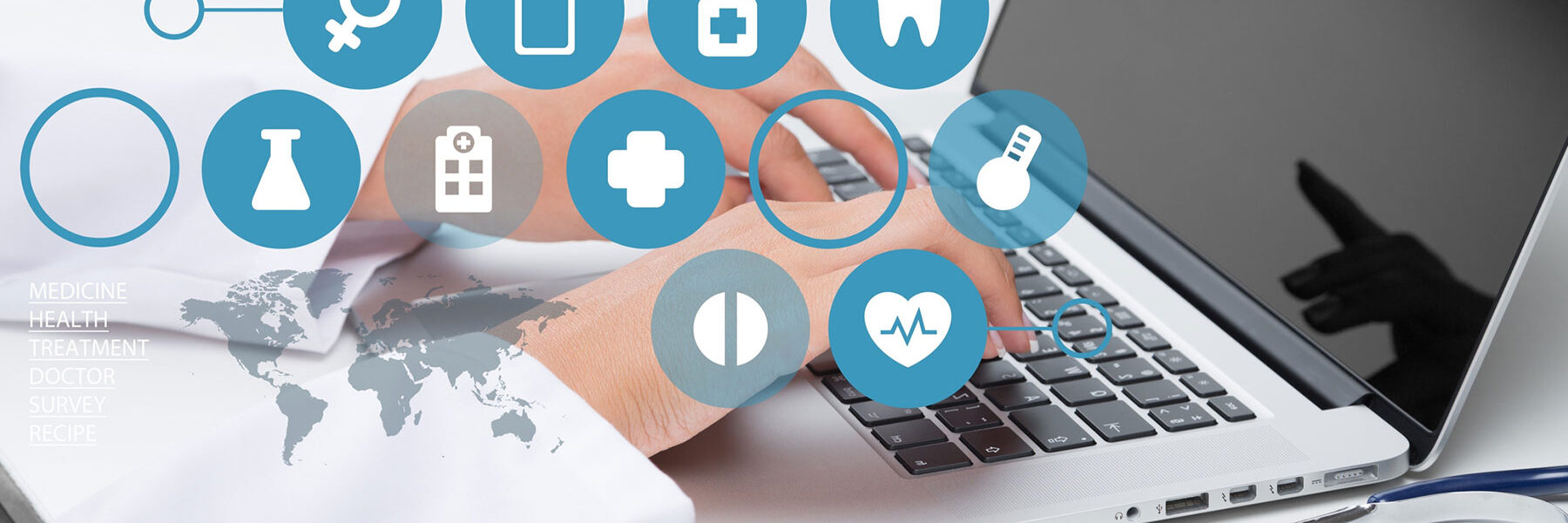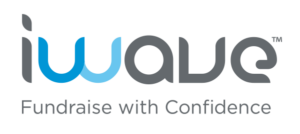From Grateful Patient Screening to Proposal Writing—How Does AI and Automation Drive Results in a Healthcare Setting?
“Some people call this artificial intelligence, but the reality is this technology will enhance us. So instead of artificial intelligence, I think we’ll augment our intelligence.”
– Ginni Rometty, Former CEO of IBM
Introduction
Whether you call it artificial intelligence, AI, automation, augmented reality, or anything in between, AI continues to create a buzz across the globe. It has also created questions and confusion for many, including those in the philanthropic sector. While AI is nothing new, the buzz is undeniably loud right now, and many in fundraising, especially those in the healthcare sector that have additional compliance—and even ethical—issues to navigate, are wondering how to harness the power of AI while also not risking their careers. iWave and BWF have partnered to provide guidance and assurance that humans and AI can not only coexist (and have been for decades!) but can thrive by enhancing our intelligence to drive results and impact our world for the better.
Some credit ancient Greeks with creating the first artificial intelligence by inventing automatons—machines that moved independently from human control. Fast forward to 1921 when the world was introduced to the word “robot,” thanks to a Czech playwright who questioned if machines could harm society. In the 1950s, AI began to build momentum and the phrase “Artificial Intelligence” was coined at a Dartmouth University workshop held for the top computer scientists of the time. What many thought was a concept only accessible to the brightest minds in academia eventually brought us home computers, The Terminator (you didn’t think we would skip him, did you?), facial recognition software, Amazon recommendations, personal smart assistants like Alexa and Siri, ChatGPT, and thousands more examples that you may not even know are considered AI. The world has undoubtedly been changed by AI—but how can it change the way we do business every day? First, let’s dive into the basics.
Defining AI
Generative AI, or generative artificial intelligence, represents a groundbreaking technological innovation that shapes personalized and emotionally resonant content. Its ability to expedite the creation of first drafts empowers nonprofit professionals and can help cultivate stronger connections between organizations and their supporters. Generative AI is purposefully developed to enhance human capabilities rather than replace them.
Predictive AI refers to the use of machine learning to identify patterns in past events and make predictions about future events by studying existing data. Predictive artificial intelligence uses statistical analysis to identify patterns, anticipate behaviors, and forecast future events. It’s important to note its predictions are not guaranteed, but they can help you both better prepare for what’s to come and personalize experiences for your donors and prospects.
Defining Automation
At its core, automation refers to the technique of making a process or system operate automatically. Believe it or not, the first fully automated “process” was invented in 1771—a fully automated spinning mill driven by waterpower, known at the time as the water frame. The Industrial Revolution saw a drastic rise in automation in industry and has shown no signs of slowing.
The Increasing Role of AI and Automation
The integration of AI and automation is becoming increasingly ingrained in our daily lives and is poised for substantial growth in the coming years. From commonplace appliances like washing machines and refrigerators to more advanced technologies like smart home devices, automation has become an integral part of our routines.
Forbes predicts that AI will experience a remarkable annual growth rate of 37.3 percent from 2023 to 2030. Additionally, Forbes research indicates that AI is expected to generate 97 million jobs, mitigating concerns about workforce displacement. Notably, 97 percent of business owners express confidence in the positive impact of AI on their operations, with 54 percent believing that AI has the potential to enhance written content.
The Importance of Evaluating AI’s Use in the Healthcare Setting
Evaluating the use of AI in any nonprofit is crucial, but especially so for those in healthcare-based nonprofits. The assessment involves consideration of the benefits, challenges, and ethical implications.
Some key questions to ask include the following:
- Can it boost your efficiency and effectiveness?
- Is the investment justified?
- What are the risks involved?
- What are the rewards involved?
- How will you be transparent about AI’s use?
- Is it sustainable long term?
Ethical concerns are often one of the most common considerations when evaluating if AI is right for an organization. Privacy, data security, and losing human connection are all valid issues to proactively address.
Some possible solutions may include:
- Privacy and Security: Ensure compliance with data protection regulations (GFPR, CCPA).
- Fairness and Bias: Audit AI systems to identify and rectify biases.
- Informed Consent: Obtain explicit consent from donors before using their data for AI fundraising while providing an option to opt out of AI-based engagement.
- Transparency and Explainability: Provide clear explanations of how AI algorithms make decisions to foster understanding and accountability.
- Impact on Donor Relations: Maintain genuine and personalized interactions with your donors.
- Human Oversight: Maintain human oversight in AI processes to ensure responsible decision-making.
- Accountability and Liability: Define accountability structures for AI systems to assign responsibility in the event of an ethical breach.
- Evaluate AI Models and Strategies: Do an assessment to ensure adherence to ethical standards.
AI or the Human Touch: Do You Have to Choose?
AI and automation create efficiencies, enhance outcomes, and contribute to the identification and prioritization of the “right” prospects, but does that mean that the human touch is less important or will be eliminated in the future? Absolutely not!
The fear of the unknown has been a part of humankind since the dawn of time, so the fear of AI is natural. In 1830, a Frenchman named Barthélemy Thimonnier invented one of the first sewing machines to mass-produce uniforms for the French army. Two hundred tailors rioted in protest, destroying the machines they feared would replace them. Of course, we know now that sewing machines still need humans to run them, create the designs, and more; in fact, some of the most amazing works of art and fashion are created with the collaboration between a designer/artist and a sewing machine. Just as a sewing machine cannot make the garment on its own, AI cannot build a relationship or inspire philanthropy on its own.
One of the main benefits of AI and automation for nonprofits is the ability to streamline and automate repetitive tasks. Nonprofit organizations often have limited resources and staff, which means that time and energy are precious commodities. By automating tasks such as data entry, report generation, and first drafts, nonprofit staff can focus their efforts on more meaningful and impactful work.
It’s important to note that AI and automation are not meant to replace human judgment or intuition. Instead, they serve as tools to support and augment human decision-making. Nonprofits are built on human empathy, compassion, and understanding, and those qualities cannot be replicated by technology.
One example of how AI and fundraising staff have been working in partnership for many years is that of capacity verification. BWF’s clients use products like iWave’s screening capabilities to help identify prospects who have the capacity to give a major gift. But an essential part of this process is post-screening verifications in which a development professional reviews each prospect’s data to verify that the data is matched to the correct prospect. The combination of human intuition and personal insights with AI capabilities allows organizations to be faster, more efficient, and more accurate than ever before.
Automation and AI in Healthcare
Grateful patients are those who have visited your healthcare center or hospital and had a positive experience and want to give back. Perhaps your doctors saved their lives, or you gave them a personalized experience that made them feel secure and confident. No matter the reason for their gratitude, they can thank you for your help by supporting your program. Patients who had a life-changing experience at your facility want to help you provide that same care to other patients, and a formal grateful patient program can do just that.
Daily Screenings
A core component of grateful patient programs includes a process that aids in identifying past patients who may be willing and able to support your hospital today. These are your success stories and the people behind them are proven to have the means to make an impactful donation to your programming. But how do you find them? How do you prioritize who are the “best” patients that are most likely to give gifts? AI and automation have endless applications to help your fundraisers perform at their peak.
Wealth screenings are one of the most common and important ways that hospitals leverage AI to quickly identify if a patient may have the capacity to give a significant gift. An industry leader in the field, iWave’s grateful patient system leverages iWave Screening but bypasses the manual in-product upload process offering access to the secure file transfer protocol (SFTP) server for designing a streamlined, automated process or drag-and-drop for ad-hoc patient file screening. It is typically used daily or regularly to match patients to wealth and philanthropic indicators. Within hours of names being uploaded, results are returned, identifying individuals who have propensity (or inclination), affinity to healthcare, and capacity to give large donations. Grateful patient screening is a powerful component of a proactive, predictive grateful patient program.
The benefits of daily screenings allow you to:
- Identify Ideal Donors with Accuracy: AI-powered models combine the industry’s most accurate donor data with your organization’s CRM and patient data to deliver actionable insights. Uncover high-potential donors, major giving or planned giving prospects, and more.
- Save Time with Automation: Automatically identify patients who are past donors, suppress duplicate prospects, and track your VIP donors in screening results to time your outreach and work more efficiently.
- Engage Donors More Strategically: Segment prospective donors using comprehensive data about their giving potential and philanthropic history. Boost cultivation efforts with actionable insights that help you formulate the right message.
- Enrich Your Donor Database: Accelerate your fundraising with up-to-date donor information. Scores and key indicators enable you to get a quick snapshot of the desirability of prospects in your donor funnel.
Data-Driven Donor Insights
AI enables healthcare organizations to harness the power of data for a better understanding of donor behavior, preferences, and engagement patterns. By analyzing historical data, AI algorithms can identify potential donors, segment them based on their interests, and tailor fundraising campaigns accordingly. This data-driven approach helps organizations create targeted and personalized appeals and proposals, increasing the likelihood of attracting donors who are passionate about specific healthcare causes.
Predictive Analytics and Forecasting Success
Predictive analytics, a branch of AI, allows healthcare fundraisers to forecast future trends and identify potential donors who are likely to contribute significantly. By analyzing past donation patterns and considering various factors, such as demographics, online behavior, and social media interactions, AI algorithms can predict which individuals or groups are more inclined to support healthcare initiatives. This foresight allows organizations to focus their efforts on cultivating relationships with high-potential donors, thereby maximizing fundraising success.
Chatbots and Virtual Assistants
AI-powered chatbots and virtual assistants have become valuable tools in healthcare fundraising efforts. These automated systems can engage with potential donors in real-time, providing information about ongoing campaigns, answering queries, and facilitating the donation process. Chatbots can also personalize interactions by tailoring messages based on donors’ preferences and history, creating a more engaging and user-friendly experience. With the additional insights provided by gift officers who personally understand the donor, this personalized, yet convenient and on-demand feature, can enhance the donor experience.
Dynamic Naming, Recognition, and “Pricing” Strategies
BWF frequently conducts industry benchmarking studies to understand the current market, including naming and recognition conventions and the associated gift thresholds required for such opportunities. AI can optimize fundraising campaigns by analyzing market trends, donor behavior, and external factors, and using AI algorithms can dynamically adjust donation requests and suggested contribution amounts. This ensures that fundraising appeals are relevant and resonant with donors, increasing the likelihood of securing contributions. Additionally, AI can optimize donation pages, making them more user-friendly and conducive to higher conversion rates.
Content Generation
Generative AI solutions like NonprofitOS produce images, text, videos, and audio in response to instructional input. In a 2023 blog, BWF data science experts outlined the ways that generative AI tools can be especially useful in the content generation or brainstorming process. Fundraisers can use these solutions to:
- Develop blog post ideas and first drafts.
- Generate eye-catching email subject lines.
- Draft emails and thank-you notes.
- Research unfamiliar topic areas.
- Draft social media posts and email content.
- Write grant applications.
- Identify useful questions for donor satisfaction surveys.
- Create fundraising scripts for phone calls or in-person donation requests.
- Brainstorm ideas for fundraising campaign themes, slogans, or taglines.
- Create personalized stewardship plans.
- Summarize donor profiles.
ICYMI iWave recently unveiled its latest innovation, Nonprofit Operating System, a generative AI tool created by nonprofit experts solely for nonprofits. With NonprofitOS, you can expedite the creation of authentic, empathy-driven content. The models learn from nonprofit users and are adaptable to specific sectors such as healthcare, arts, and human services. One thing that sets NonprofitOS apart is its ability to be trained against your website and brand documentation, ensuring your messaging aligns seamlessly with your nonprofit’s unique tone and voice.
Keep in mind, a human touch is still needed to fully optimize the work created through AI. AI-generated content can have factual errors and lack authenticity, which can decrease the quality of your product and even negatively affect your strategy. That’s why it’s important to edit any AI-generated content to reflect your nonprofit’s unique brand and voice, as well as fact-check this content for accuracy.
Conclusion
As the healthcare industry continues to evolve, so too must the strategies for fundraising. AI has emerged as a transformative force, revolutionizing healthcare fundraising efforts by providing data-driven insights, predicting donor behavior, enhancing donor engagement, optimizing donor solicitation and naming recognition strategies—and the possibilities continue to evolve. By embracing AI technologies, healthcare organizations can elevate their fundraising initiatives, ultimately driving greater support for critical medical research and advancements. Today’s patients are waiting for tomorrow’s breakthroughs, and AI can help you and your teams optimize fundraising results to bring those breakthroughs from hope to reality. Let us help! Contact our team today to get started.
About BWF: BWF is a leading nonprofit solutions company offering a comprehensive suite of services to support and advance the philanthropic goals of its clients. With a global footprint, BWF serves a diverse range of organizations, including colleges and universities, health systems, environmental organizations, and NGOs across the globe. At the heart of BWF’s service offering is a full spectrum of capabilities encompassing campaigns and fundraising strategies, operations and technology solutions, and engagement and donor experience services as well as enterprise solutions. These services are underpinned by the innovative approaches and insights from BWF’s Innovation Hub, ensuring that clients not only meet their immediate goals but also contribute to positive change in the broader industry. BWF’s team comprises consultants with in-depth backgrounds and experience across every facet of philanthropy, ensuring a truly comprehensive approach to fundraising consulting. This combination of wide-ranging expertise and innovative methodologies positions BWF uniquely to elevate its clients’ outcomes and shape future trends within the philanthropic sector. Visit bwf.com for more.
About iWave: iWave, the industry’s top-rated fundraising intelligence solution, enables nonprofit organizations to fundraise with confidence. In a new era of nonprofit fundraising, iWave solves critical challenges facing fundraising professionals today: how to identify, qualify, and retain donors to raise more gifts. iWave’s intuitive and easy-to-use solutions give access to the industry’s highest quality wealth and philanthropic information so you can determine who to ask, how much to ask for, and when to ask. Many of the largest education, healthcare, and nonprofit organizations in the world rely on iWave to power their fundraising efforts. Visit iWave.com for more.





